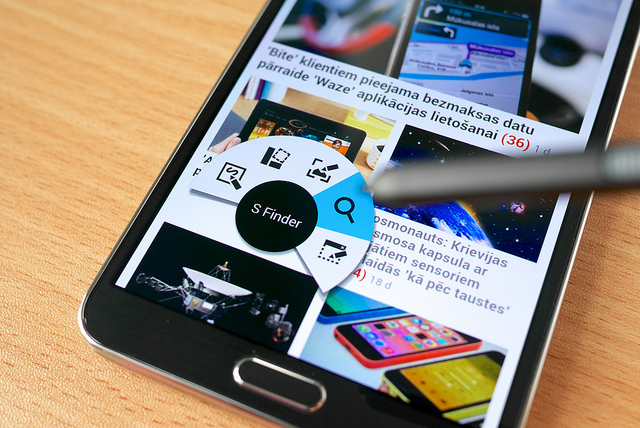To create user interfaces that really capture the attention of users it is important that you pay attention to details.
One of the details that maybe doesn’t seem worth spending time on but definitely is worth rolling up your sleeves and digging into is micro-interactions. Micro-interactions are the little actions that happen before, during, and after a user engages with a website or mobile app and should be a part of your website or mobile app development process.
Micro-interactions help guide users when they are using your interface by offering noticeable responses to behaviors confirming that the system has received their input. To summarize a micro-interaction, when a user takes an action, the interface responds in a pleasing way that engages the user.
Use micro-interactions to improve user engagement
Well thought out micro-interactions improve user engagement on websites, mobile apps and other products.
Take the time to consider the experience a person has with your website or mobile app, what do they see, feel and think while utilizing your user interface? Is it a joy to use? Are they excited? Do they want to tell their friends about it?
Often nuances such as micro-interactions are overlooked in the rush to get your website or mobile app live. But if you think about it, the user interfaces that you really enjoy using and that you tell your friends about are the ones where somebody took the time to sweat the small stuff.
Have you ever been on a mobile app or web site and thought to yourself “Wow! That is cool” when you were surprised by an unexpected detail? These are the kind of things that make an interface a joy to use and keep users coming back.
If you are not familiar with micro-interactions, here are a few basic examples that you might be familiar with:
Usability
Usability is one of the key factors of great interface design. Great usability often includes micro-interactions. Micro-interactions encourage engagement and help users understand how an interface works.
These small details may seem insignificant, but from a user experience standpoint, they genuinely make a huge difference between an interface that is just ok and an interface that is exceptional. These micro-interactions help the user feel rewarded for taking an action and can help teach them how to use the interface in a pleasant way.
Image: Fouquier (Flikr) http://bit.ly/2QVLFUF
Frequently when a designer sites down to work on a web site design, they think they know all about web users and what they are looking for from a web site. Unfortunately, all too often designers do nothing to check those assumptions. If they did, they would most likely find out that they are off the mark with their conjecture.
Web site designs that are not rooted in a solid understanding of a brand’s users along with their needs are destined to under perform. If you don’t understand what a user wants or needs from a site you can’t possibly know what to offer or how to offer it.
 It is important that before you begin designing that you not only understand the site’s users’ requirements but also develop a sound understanding of their thought process, purchase journey, constraints and the environment in which they view the web site. User experience designers rely on this information and by leveraging it are able to create web sites that have far superior results. In fact, IBM believes the benefit of user experience design can be up to 100 times what is invested in it.
It is important that before you begin designing that you not only understand the site’s users’ requirements but also develop a sound understanding of their thought process, purchase journey, constraints and the environment in which they view the web site. User experience designers rely on this information and by leveraging it are able to create web sites that have far superior results. In fact, IBM believes the benefit of user experience design can be up to 100 times what is invested in it.
Spend the time to develop an understanding about your users. After you have done that, create personas based on the information you have learned. Make sure you consider user demographics, wants and needs, and other relevant factors when creating your persona. You will find that personas are not etched in stone; they should evolve as you learn more about your users. From there you can create designs that satisfy the needs of your personas.
While working on your designs you want to make sure you don’t forget who the target audience is. Good design is a product of good research. While designing make sure you consider user interactions; think about the functionality of the website and design a site that will help users complete their intended tasks smoothly and efficiently. You need a good understanding of what your base is looking for and from there; you should help them to find it easily.
The quality of a web site’s design relates directly to conversion rates. Things like complicated navigation, slow load times, and hard-to-read type turn users away. Seek instead for your design to focus on clarity and simplicity. Clear, intuitive designs make conversions much more likely. Your site should feature simple, logical and intuitive controls
Another factor that is important to good design is having your information prioritized in a hierarchy that makes sense to your users. Graphics can be used to help define this hierarchy and set a clear path for site visitors to follow. Visually appeal is important as well. You will want your home page and every page on your website to be attractive. Your website is the public face of your brand.
Pic: Tibor Kovacs (Flikr) http://bit.ly/2cG6pe7
Design is more important than ever with the limited space that mobile applications give designers to work with. On top of that, attention spans have shortened, placing a premium on your app being easy to use right off the bat, but you want to make sure that your design doesn’t turn off experienced users as well. This fine line means that good design is of utmost importance for mobile applications.
User experience design can pay off big dividends for any mobile app development program and should be part of your plan from the beginning, but strong mobile app design begins even before discussing usability.
 Start by looking at the your users’ goals for using your application. Not the goals that your business wants to accomplish by having an application but the goals your users will have for using your application. Only when you understand the goals your users will have for using your application and then and design your app’s workflow to meet their needs. Remember that users can have a number of goals in mind when using your application. Only by understanding various user’s goals can you design an interface to meet their needs.
Start by looking at the your users’ goals for using your application. Not the goals that your business wants to accomplish by having an application but the goals your users will have for using your application. Only when you understand the goals your users will have for using your application and then and design your app’s workflow to meet their needs. Remember that users can have a number of goals in mind when using your application. Only by understanding various user’s goals can you design an interface to meet their needs.
It seems obvious that you would want to make your app as usable as possible, but all too often companies fail to focus on the user experience and the usability of their application. Usability describes the ease with which consumers can user your mobile application in order to achieve a goal. Interfaces which make mobile applications easy to understand and use tend to be the interfaces regularly used by consumers. If your audience can’t easily user your app they certainly won’t return to it and will most likely remove it from their device.
Remember that as humans we are creatures of habit. An effective mobile application design will use this to its advantage. Understanding this is particularly important for user experience designer who will utilize familiar cues to indicate procedures that your users are familiar with. This familiarity reduces the amount users will need to think to use your app, increasing the usability of its interface as it will be intuitive for your users to interact with.
Don’t forget to provide feedback to your users to let them know if tasks are completed or not. This simple tip greatly improves the experience of your application making it more friendly and responsive. Even the simplest forms of feedback allow your users to feel like their actions are causing something to happen on their screens. Without feedback they are left to wonder if their action took affect, which can frustrate them and turn them away from your application.
Photo: Kārlis Dambrāns (Flikr) http://bit.ly/1JIQUAF